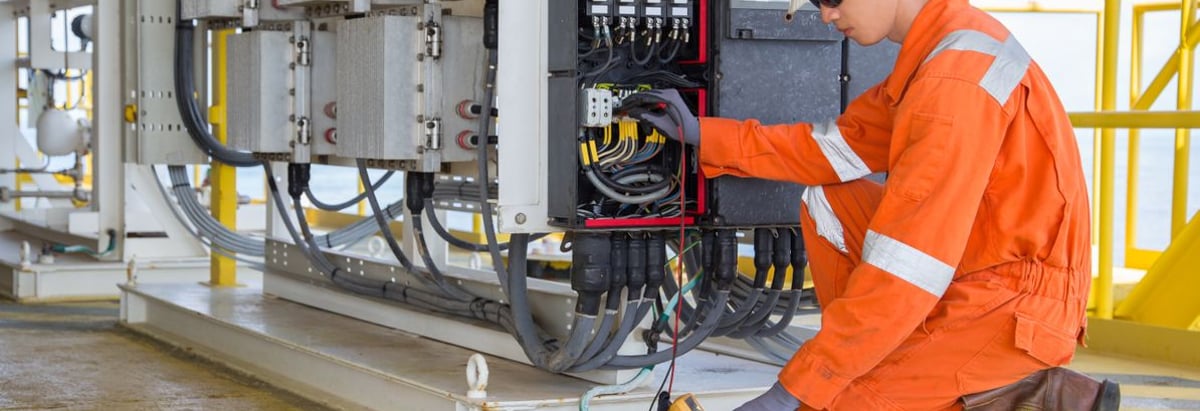Stock Analysis
- Germany
- /
- Electrical
- /
- XTRA:NDX1
These 4 Measures Indicate That Nordex (ETR:NDX1) Is Using Debt Reasonably Well

Warren Buffett famously said, 'Volatility is far from synonymous with risk.' When we think about how risky a company is, we always like to look at its use of debt, since debt overload can lead to ruin. As with many other companies Nordex SE (ETR:NDX1) makes use of debt. But should shareholders be worried about its use of debt?
Why Does Debt Bring Risk?
Generally speaking, debt only becomes a real problem when a company can't easily pay it off, either by raising capital or with its own cash flow. Part and parcel of capitalism is the process of 'creative destruction' where failed businesses are mercilessly liquidated by their bankers. However, a more common (but still painful) scenario is that it has to raise new equity capital at a low price, thus permanently diluting shareholders. Of course, plenty of companies use debt to fund growth, without any negative consequences. The first thing to do when considering how much debt a business uses is to look at its cash and debt together.
See our latest analysis for Nordex
How Much Debt Does Nordex Carry?
The chart below, which you can click on for greater detail, shows that Nordex had €304.9m in debt in June 2024; about the same as the year before. But on the other hand it also has €750.1m in cash, leading to a €445.2m net cash position.
How Healthy Is Nordex's Balance Sheet?
We can see from the most recent balance sheet that Nordex had liabilities of €3.46b falling due within a year, and liabilities of €1.02b due beyond that. Offsetting these obligations, it had cash of €750.1m as well as receivables valued at €1.59b due within 12 months. So it has liabilities totalling €2.14b more than its cash and near-term receivables, combined.
This deficit is considerable relative to its market capitalization of €3.27b, so it does suggest shareholders should keep an eye on Nordex's use of debt. Should its lenders demand that it shore up the balance sheet, shareholders would likely face severe dilution. While it does have liabilities worth noting, Nordex also has more cash than debt, so we're pretty confident it can manage its debt safely.
We also note that Nordex improved its EBIT from a last year's loss to a positive €106m. The balance sheet is clearly the area to focus on when you are analysing debt. But ultimately the future profitability of the business will decide if Nordex can strengthen its balance sheet over time. So if you're focused on the future you can check out this free report showing analyst profit forecasts.
But our final consideration is also important, because a company cannot pay debt with paper profits; it needs cold hard cash. Nordex may have net cash on the balance sheet, but it is still interesting to look at how well the business converts its earnings before interest and tax (EBIT) to free cash flow, because that will influence both its need for, and its capacity to manage debt. Over the last year, Nordex actually produced more free cash flow than EBIT. There's nothing better than incoming cash when it comes to staying in your lenders' good graces.
Summing Up
While Nordex does have more liabilities than liquid assets, it also has net cash of €445.2m. And it impressed us with free cash flow of €154m, being 145% of its EBIT. So we don't have any problem with Nordex's use of debt. Even though Nordex lost money on the bottom line, its positive EBIT suggests the business itself has potential. So you might want to check out how earnings have been trending over the last few years.
At the end of the day, it's often better to focus on companies that are free from net debt. You can access our special list of such companies (all with a track record of profit growth). It's free.
Valuation is complex, but we're here to simplify it.
Discover if Nordex might be undervalued or overvalued with our detailed analysis, featuring fair value estimates, potential risks, dividends, insider trades, and its financial condition.
Access Free AnalysisHave feedback on this article? Concerned about the content? Get in touch with us directly. Alternatively, email editorial-team (at) simplywallst.com.
This article by Simply Wall St is general in nature. We provide commentary based on historical data and analyst forecasts only using an unbiased methodology and our articles are not intended to be financial advice. It does not constitute a recommendation to buy or sell any stock, and does not take account of your objectives, or your financial situation. We aim to bring you long-term focused analysis driven by fundamental data. Note that our analysis may not factor in the latest price-sensitive company announcements or qualitative material. Simply Wall St has no position in any stocks mentioned.
About XTRA:NDX1
Nordex
Develops, manufactures, and distributes multi-megawatt onshore wind turbines worldwide.

